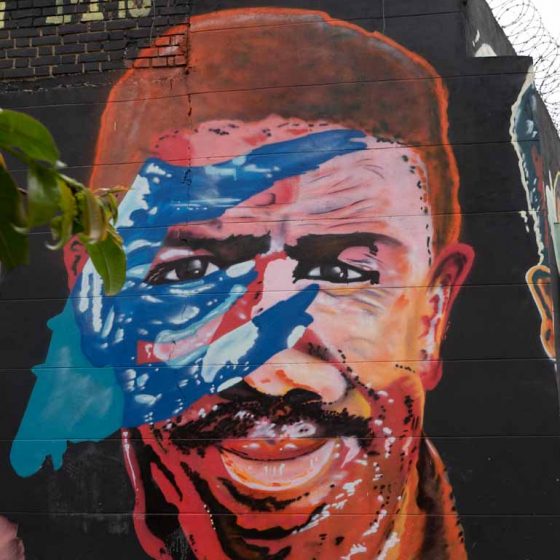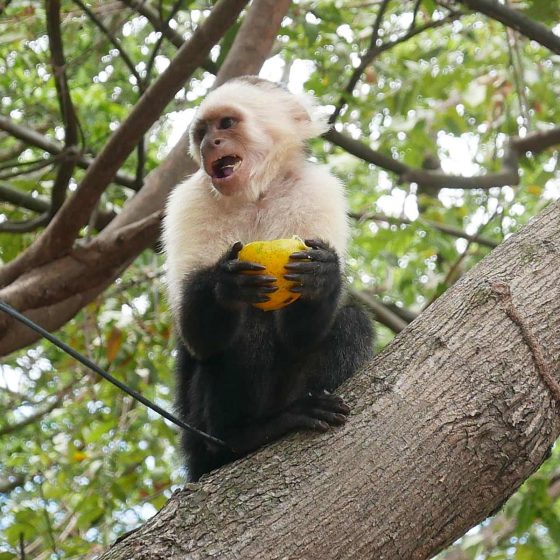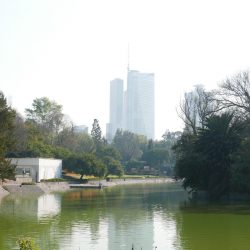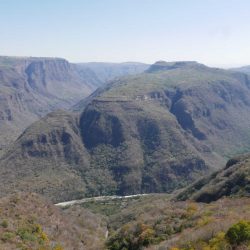It’s a sunday morning and it’s dead calm on the Avenida Juarez, the main traffic artery of Guadalajara. Cyclists are gliding down the five lane avenue, passing families enjoying the gentle January weather.
(there is also a photo album about Guadalajara)
It says a lot about GDL (Guadalajara) that it can slow down its heartbeat and relax a bit. CDMX (Mexico City) is the loud and frenzy international hotspot, the metropolis screaming for attention on the world stage. But don’t count out Guadalajara: a vast city that has much more truly Mexican fabric than the capital.
This is not a place for a quick visit. Guadalajara has to soak into your skin, has to soothe you, relax you, until you are ready to go with the flow. This was actually the first time I was really reminded of the fact this was Latin America after all.
Where CDMX (Mexico City) is loud, fast-paced, quite western with its huge skyscrapers and its vast scale, GDL (Guadalajara) is much more gentle. This really is a place to feel at home, and to have a closer look at Latino culture. The good sides AND the bad sides.
CONTENTS
- City center: most tourists don’t venture beyond this area. And why would you, as there is so much to see and experience on such a small piece of land? The Rotonda de los Jaliscienses Ilustres is a good place to start, a circle of statues of famous people from the Jalisco province. The regional museum is adjacent to it, opposite is the not-to-be-missed cathedral with its twin towers.
- Plenty of parks around here as well, Plaza de Liberacion being the biggest one with the Teatro Degollado on the eastern edge. Continue in that direction to go to Hospicio Cabanas. On your way back, indulge in the crazy covered market of San Juan de Dios (apparently one of the world’s biggest indoor ones). Follow the main streets back to the cathedral and the Plaza de Armas on its southern side. The Palacio de Gobierno also hides some Orozco murals, that you can visit for free after leaving your personal details at the door. In the evenings there is plenty of nightlife along Aveinda Juarez, but once most bars and restaurants close it can become deserted and not entirely safe, especially after 10pm
- Lafayette: this leafy, relaxed neighborhood on the western tip of the centre doesn’t feel like a big city at all and in that sense very much reminds of Polanco in Mexico City. The streets are lined with beautiful colonial villas, especially the awesome Calle Libertad, which has several good places for a daytime coffee. That avenue ends on the Avenida Chapultepec Sur, running from north to south, which probably qualifies for the party mile of Guadalajara. This is the place where it gets funky in the evenings.
- Colonia Americana: very close to Lafayette (only a bit more to the east/northeast) is the Colonia Americana. They actually share the Calle Libertad mentioned above. This area more or less runs until the Calzada del Federalismo Sur. Towards the northern side you can find the Parque Revolucion, which marks the edge of the centre, and the excellent MUSA (Museo de los Artes Universidad de Guadalajara).
- Zapopan: the locals declared me crazy to walk from the centre to the northwestern suburb of Zapopan. But it actually takes you on a journey from the old-style Zona Centro to new office skyscrapers to the old village of Zapopan again. There are two main reasons to go here: the Basilica de Nuestra Senora de Zapopan (rather disappointing in my opinion) and the much better MAZ (Museo de Arte Zapopan), which houses temporary contemporary art exhibitions
- Coronilla street: not really a neighborhood, but definitely the nicest street in the centre. Magnificent place to drink several coffees and watch the tapatios enjoying life
- Tortas are a very nice Latino tradition. These warm bread buns are usually filled with juicy meat and vegetables. One of the absolute best places is La Bendicion, an unassuming joint on the eastern side of Plaza Revolucion
- On the northern side of Colonia Americana is Pigs Pearls burger, trying to get a stake in the burger craze that has been taking over the world in recent years. Decent, but slightly overhyped burgers. Head for a torta (see above) for a genuine Mexican experience
- Chapultepec Sur: as mentioned before, the biggest party scene is in this avenue in Lafayette
- Gay district: Guadalajara has one of the bigger gay scenes of the country, which ranges from saunas (which are not used for the heat, rest assured) to queer bars. The epicentre is at the junction of Ocampo and Calle Priscilliano Sanchez, in places like Caudillos Disco Bar, California’s and La Prisciliana
- The Teatro Degollado is dead-bang in the middle of town, on the eastern edge of Plaza de la Liberacion. One of the finest buildings in the city, though I couldn’t really find out whether there are still plays and how to get tickets for them
- Travesia Cuatro: excellent mid-sized venue which sometimes also has American indie and rock bands on stage
- Foro Periplo: one of those places that you probably only discover when endlessly strolling around a city. The Periplo (https://www.elperiplo.com/foro)is a cultural centre which mainly does theatre plays. It’s in the rather vibrant Calle Prisciliano Sanchez, also the centre of the gay scene
- Hospicio Cabanas: truly stunning building and collection. The former hospital has a relaxed vibe due to its 23 generous inner courtyards. It is on UNESCO’s World Heritage List and should therefore be (but isn’t) world-famous for its 57 modernist frescoes by Orozco. They cover the entire ceiling and walls of the central building of the complex. When enjoying these artworks, best done lying on your back, you wonder how the artist pulled something this scale off. These things live and breathe, with an incredible intensity. During my visit the museum also had jaw-dropping temporary exhibitions of contemporary art. Free entrance on wednesdays, important for stingy Dutch people 😉
- Museu Arte University (MUSA): if all universities are like this I would love to study again. The auditorium of the MUSA is apparently also still used for student events, so I ended up in a masterclass of something I definitely didn’t understand (which happens quite often). But I could enjoy the – yes it’s him again – Orozco murals, especially the Five Stages of Men on the ceiling. Wow. On the first floor there are temporary exhibitions in this sympathetic, mid-sized place
- MAZ: the Museo de Arte Zapopan (no Spanish skills needed for the translation hopefully) also has contemporary art exhibitions. It’s a long way to the suburb of Zapopan, but if you have plenty of time to spend in Guadalajara it makes the perfect target for a day out
- Governors building (Palacio de Gobierno): another showpiece of Orozco murals. After you have left your personal details and your valuable signature at the reception, you can head immediately right where the ceiling of a staircase completely engulfs you. An even bigger artwork awaits you in the main parliament room
- Tlaquepaque: suburb in the southeast part of the city. It’s known as a centre for artisanal works, from pottery to paintings and furniture. Prices are as high as the quality. This entire area is very tourist-friendly and almost picture-perfect to spend a couple of hours, for all kinds of budgets. I especially liked the Mercado Juarez, which is a chaotic food market full of stalls where the locals themselves eat
- Barranca de Huentitan: one of the hidden gems of the city. Everybody knows the Grand Canyon in America, but the Barranca is definitely not much less attractive. The tapatios like to keep that secret to themselves apparently though, because the site on the northern edge is almost impossible to reach by public transport. Only a lot of help by friendly locals got me there.
The tricky part is that you first have to descend, all around 550 metres down. You can enjoy the valley as long as you like, with its speedy rivers. But… you still have to get back, which can be a strenuous 1,5-2 hours expedition. So beware and don’t overestimate your energy 🙂 Upstairs you can then enjoy fresh coconut juice! - Primavera forest it would be exaggerated to call this protected forest hidden, as it is as big as the entire city of Guadalajara. Anyone who wants to escape the city heat and the concrete can enjoy a couple of hours of leisurely going… up and down 🙂 (official site)
- Football is a big thing in Mexico, though their teams can’t really compete with the world’s best clubs. But the local league is an exciting one, and Guadalajara is arguably the hotbed of futbol in the country. I went to a home match of Chivas, probably the most popular club of Mexico, in their relatively new stadium which will also host the FIFA World Cup 2026. But GDL has another legendary club, Atlas, which plays in the famous Estadio Jalisco closer to the centre. That arena hosted the World Cups of 1970 and 1986
- Tequila: after having had several nearly fatal encounters with this drink, I am not that much interested in the place where the liquor is produced. But it is one of the major tourist attractions of the city, with daily excursions going to the village of the same name, around thirty kilometres outside of GDL
- Airport: probably due to it being a successful business centre, Guadalajara features an excellent modern airport. From the centre you can get there by several autobuses, but taxi services aren’t expensive either. There are lots of international connections as well
- Bus: as with most Mexican cities, the central bus terminal is on the outskirts of the city. From there you can take a taxi (ask for ID for confirmation that it’s an official one). When the third metro line is ready you can take the easier and safer way. Long-distance buses go to all major cities, though when you want to travel further south you most likely will have to change buses in Mexico City
- Getting around: quite an adventure, not to say a nightmare. It’s rather tourist-unfriendly, as all information is in Spanish and the bus network is a mathematical mystery. There are two subway lines, but they don’t travel very far. To compensate for that, there are modern metro BUSES traveling westwards from Parque Revolucion. There are also plenty of old buses driving around, which seem to work like chicken buses in Central America: run by their owners, paid for on the bus dependiong on the distance, and the destination is shown on the front. If you’re lucky…
- shopping: a relatively recent addition to the shopping scene is the Plaza Andares, a massive complex in the Zapopan area
- Sunday cycling: as mentioned above, the main streets in the city centre are car-free every sunday until 2pm. Great way to enjoy the city and soak up its natural sounds
- The weather: rainy season is from april/max until september/october. It doesn’t rain all day, but if it does, expect downpour…
General introduction
It’s not always as quiet in Guadalajara as on sunday mornings. During the week you will also find traffic jams everywhere, old buses coughing up their exhaust fumes and walkways slowly falling apart, just as in every other Latin American town.
But the city has a sense for human scale. There are hardly any high buildings. Life still happens in the streets. Tapatios, as inhabitants of the city are called, take a gentle stroll in the center in the evenings. Restaurants and cafes are brimming with life in the early evenings. Walking around you can enjoy a cacaphony of sounds, a symphony of the big city.
At an elevation of 1.566 metres it can get slightly chilly during winter nights. But average daytime temperatures are varying between 25 and 33 degrees during the course of the year, pretty much close to perfection.The capital of Jalisco province enjoys its place in the shade of Mexico City. It took the opportunity to develop its own culture. The mariachi music style comes from here. It has one of the liveliest theatre scenes of the country. And it is of course the home for some of the most famous (and HUGE) mural paintings of Jose Clemente Orozco.
Guadalajara – with its nearly five million inhabitants – is a great place for great food and leisurely strolls. Safety can be an issue though. The nice neighborhoods (see below) are generally safe 24/7. The city center can get dodgy though after 8pm when the shops close, and especially after around 10pm when most restaurants close as well. During the nighttime it is definitely recommendable to take a taxi service in the centre and south of it, even for shorter rides. When I had to catch an early bus at the Central Vieja de Autobuses, suspicious types were strolling around the area. Use common sense during the day and use a taxi at night and you will be fine.
Logo of Guadalajara in the city centre Neighborhoods
Food and drinks
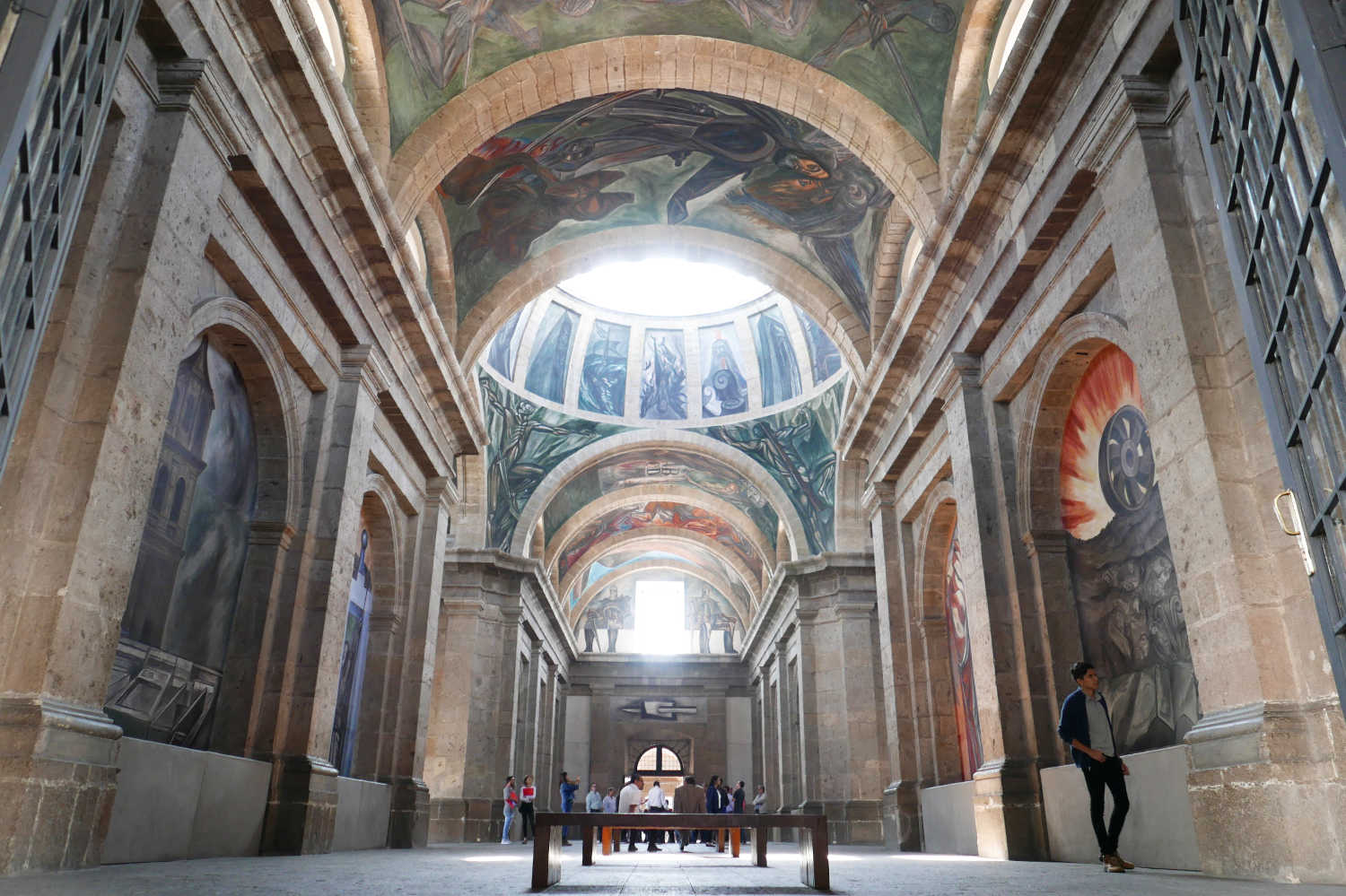
Central nave of Hospicio Cabanas in Guadalajara, full of Orozco murals Art
Activities / things to do
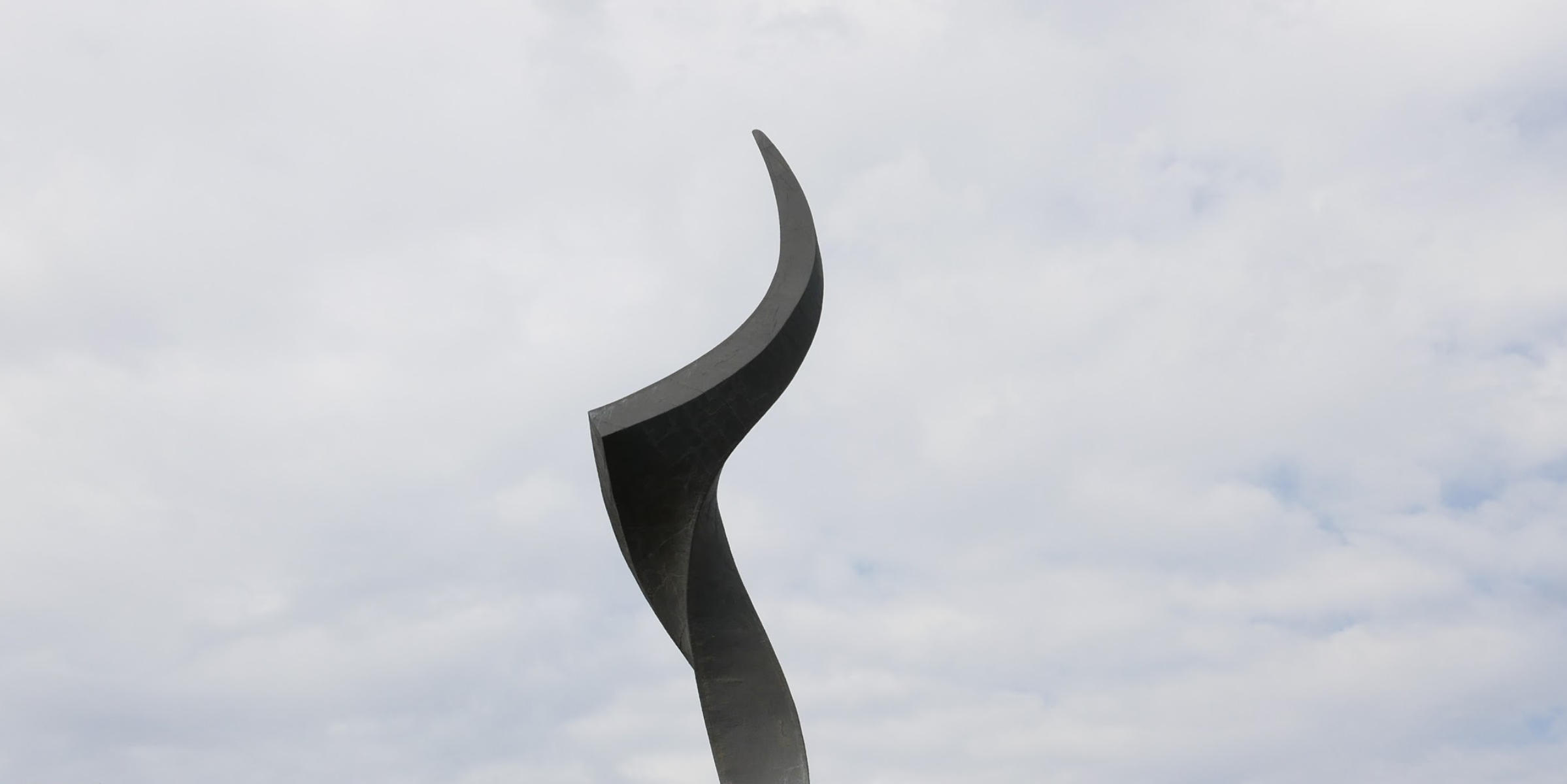
Statue in the city centre of Guadalajara Getting to GDL and getting around
Miscellaneous
